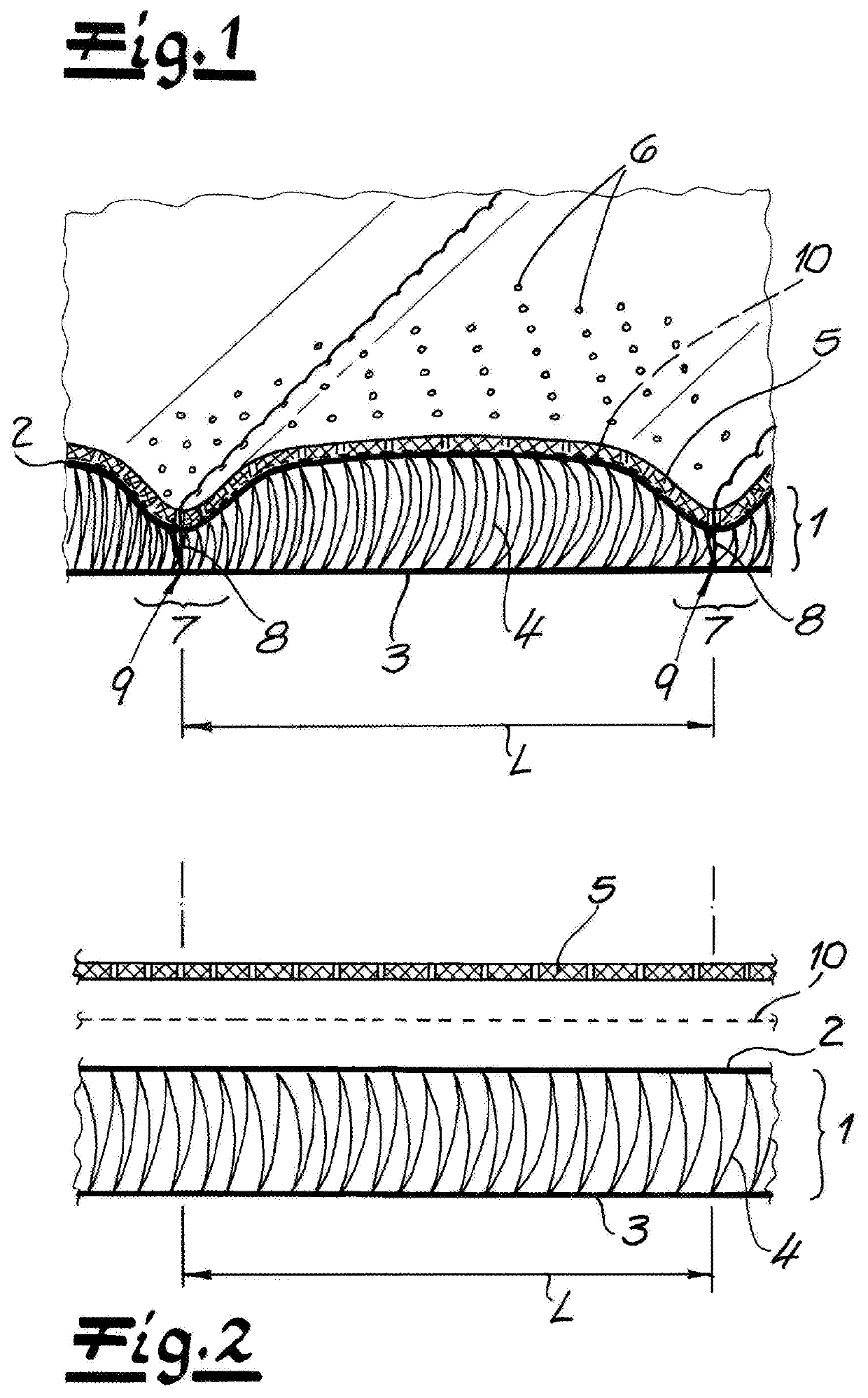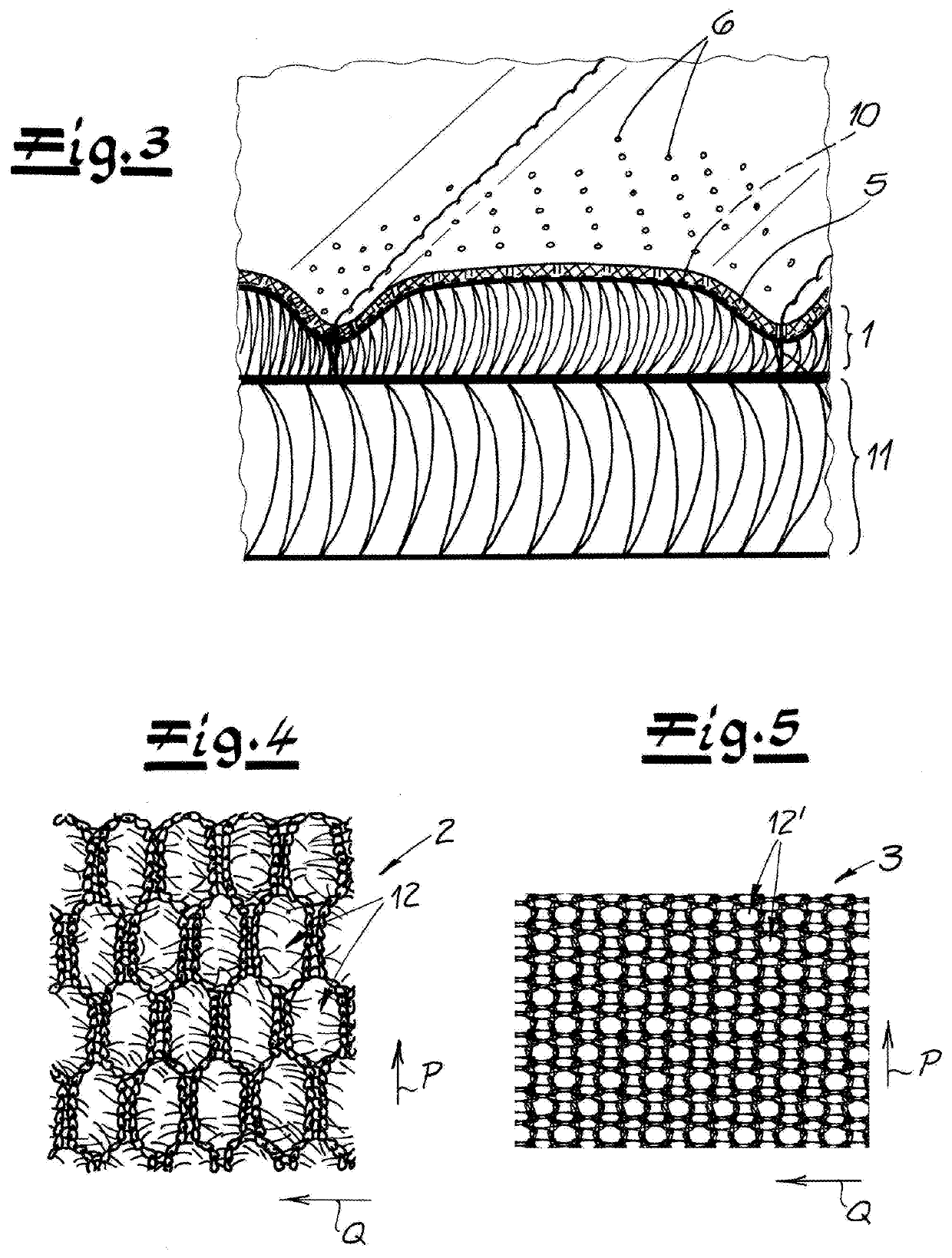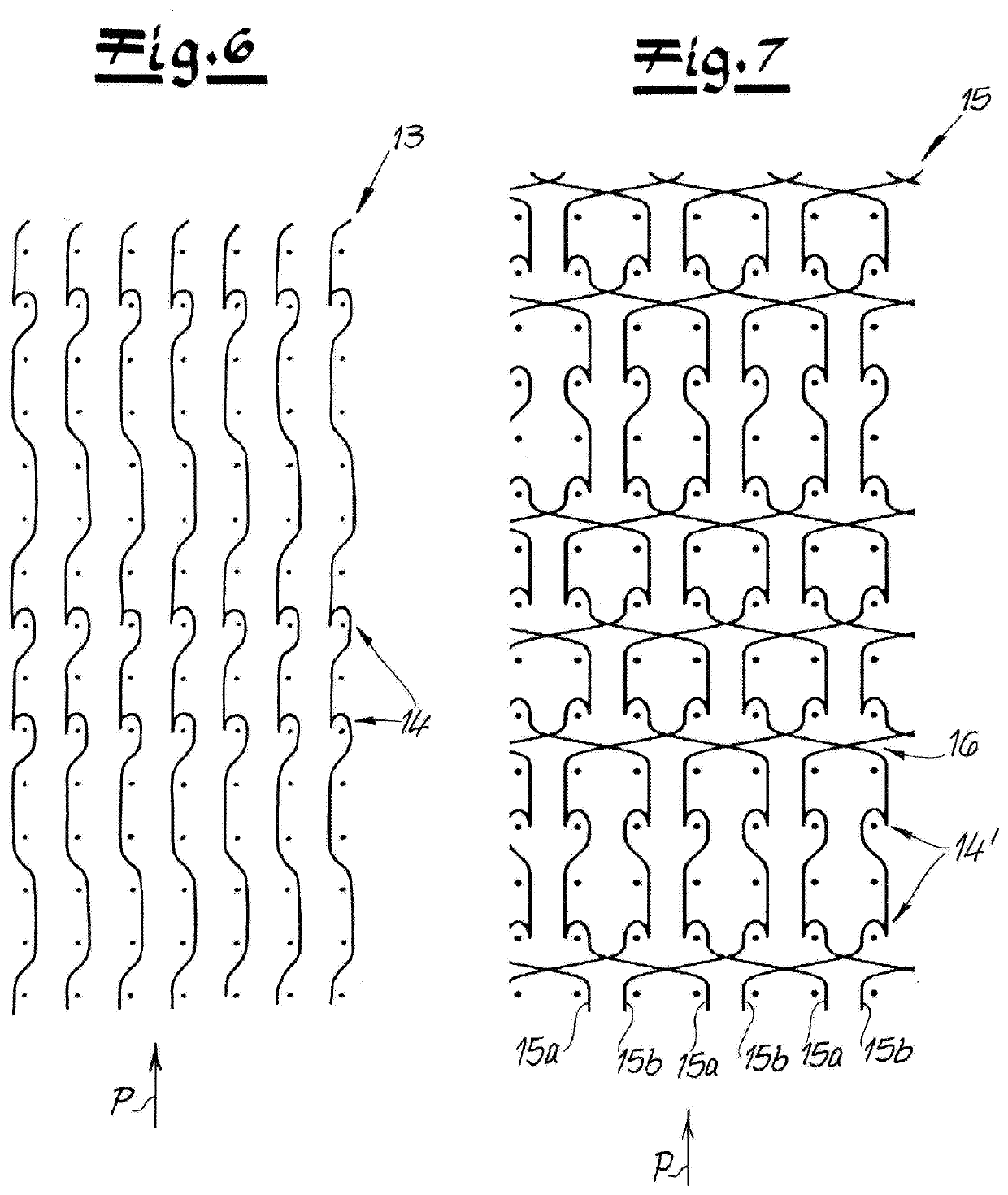Composite spacer fabric
a spacer fabric and composite technology, applied in the field of spacer fabrics, can solve the problems of only extremely low stretchability in the production (knitting) and transverse directions of the opposing cover layer, and achieve the effects of good shapability of the spacer fabric, good stretchability, and reduced deformation
- Summary
- Abstract
- Description
- Claims
- Application Information
AI Technical Summary
Benefits of technology
Problems solved by technology
Method used
Image
Examples
Embodiment Construction
[0076]FIG. 1 shows a composite that forms the uppermost layers of a vehicle seat, for example a car seat. The composite comprises a spacer fabric 1 that, as usual, extends along a production direction P and a transverse direction Q perpendicular to it. The embodiment of the spacer fabric 1 is further explained below with reference to the production direction P and the transverse direction Q. The production direction P is also referred to as the knitting direction or the longitudinal direction due to the production method.
[0077]The spacer fabric 1 has an outer flat warp-knitted fabric layer 2, an inner flat warp-knitted fabric layer 3 and spacer threads 4 interconnecting the warp-knitted fabric layers 2, 3. In the case of the two flat warp-knitted fabric layers 2, 3, stitch wales extends along in the production direction P and stitch courses in the transverse direction Q. In the warp-knitting process, the stitches of a stitch course are formed at the same time with respective guide b...
PUM
| Property | Measurement | Unit |
|---|---|---|
| tension | aaaaa | aaaaa |
| thickness | aaaaa | aaaaa |
| thickness | aaaaa | aaaaa |
Abstract
Description
Claims
Application Information
 Login to View More
Login to View More - R&D
- Intellectual Property
- Life Sciences
- Materials
- Tech Scout
- Unparalleled Data Quality
- Higher Quality Content
- 60% Fewer Hallucinations
Browse by: Latest US Patents, China's latest patents, Technical Efficacy Thesaurus, Application Domain, Technology Topic, Popular Technical Reports.
© 2025 PatSnap. All rights reserved.Legal|Privacy policy|Modern Slavery Act Transparency Statement|Sitemap|About US| Contact US: help@patsnap.com



